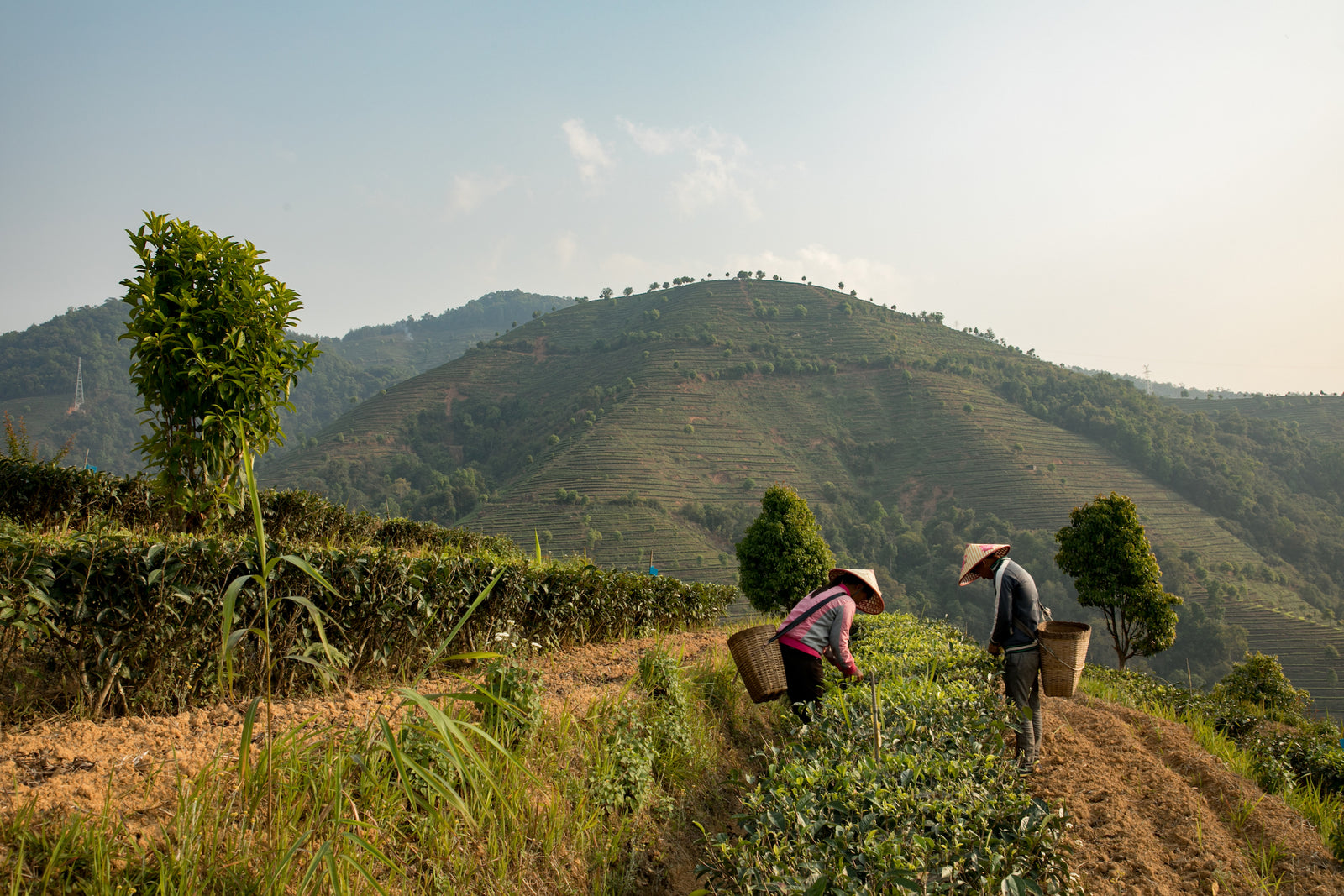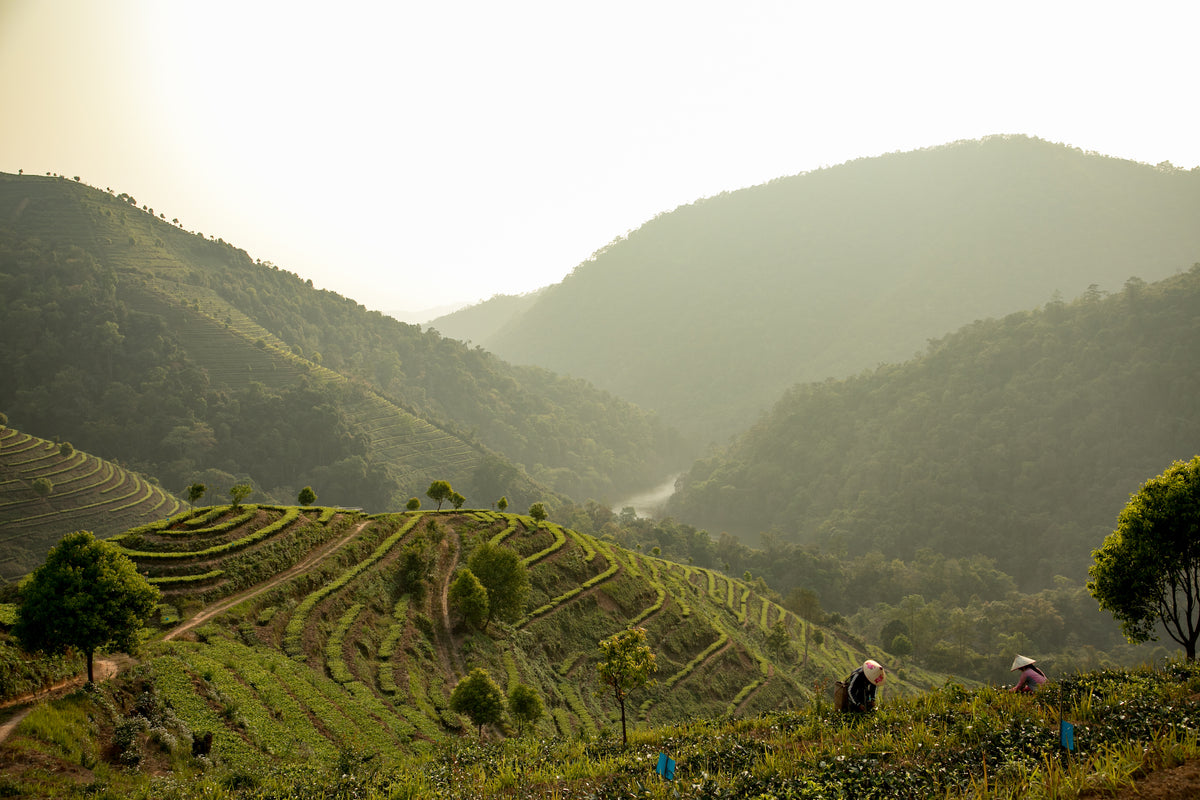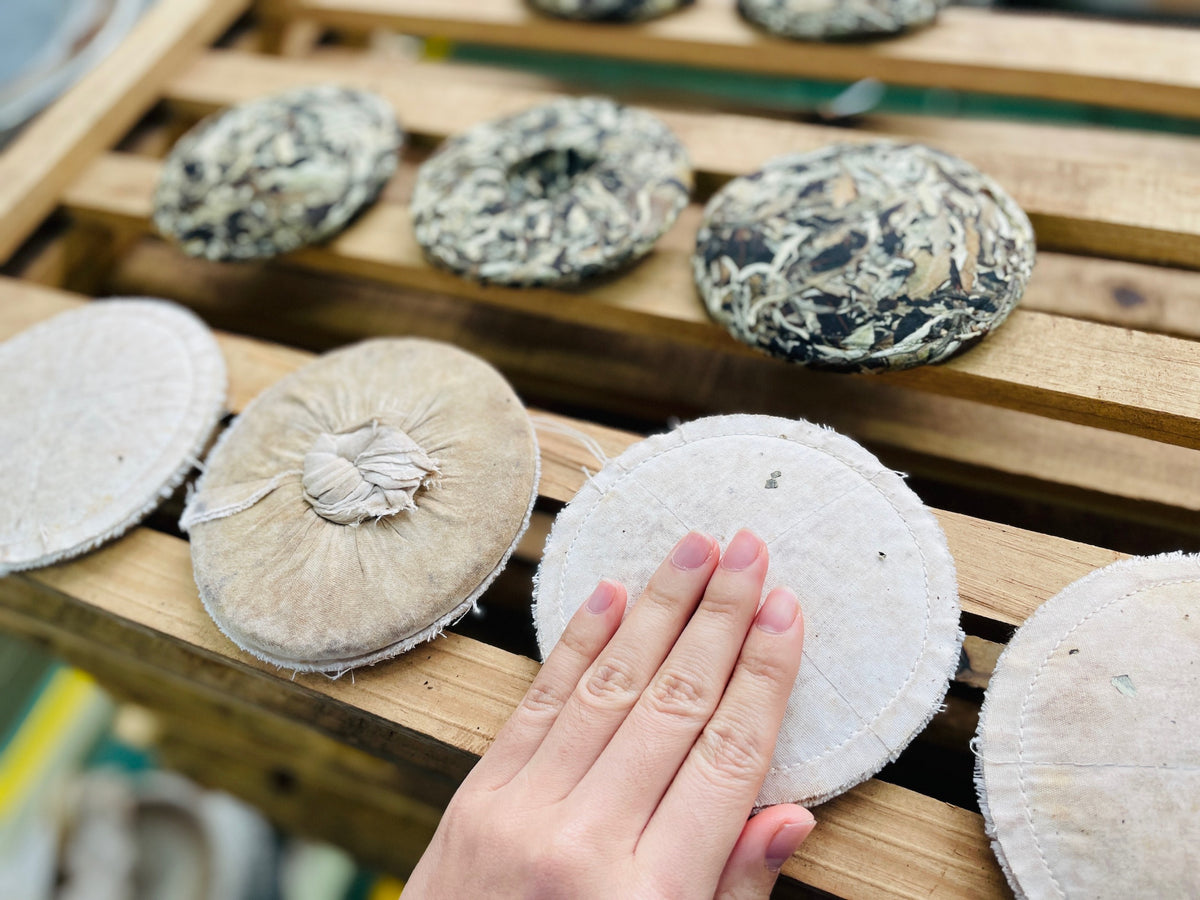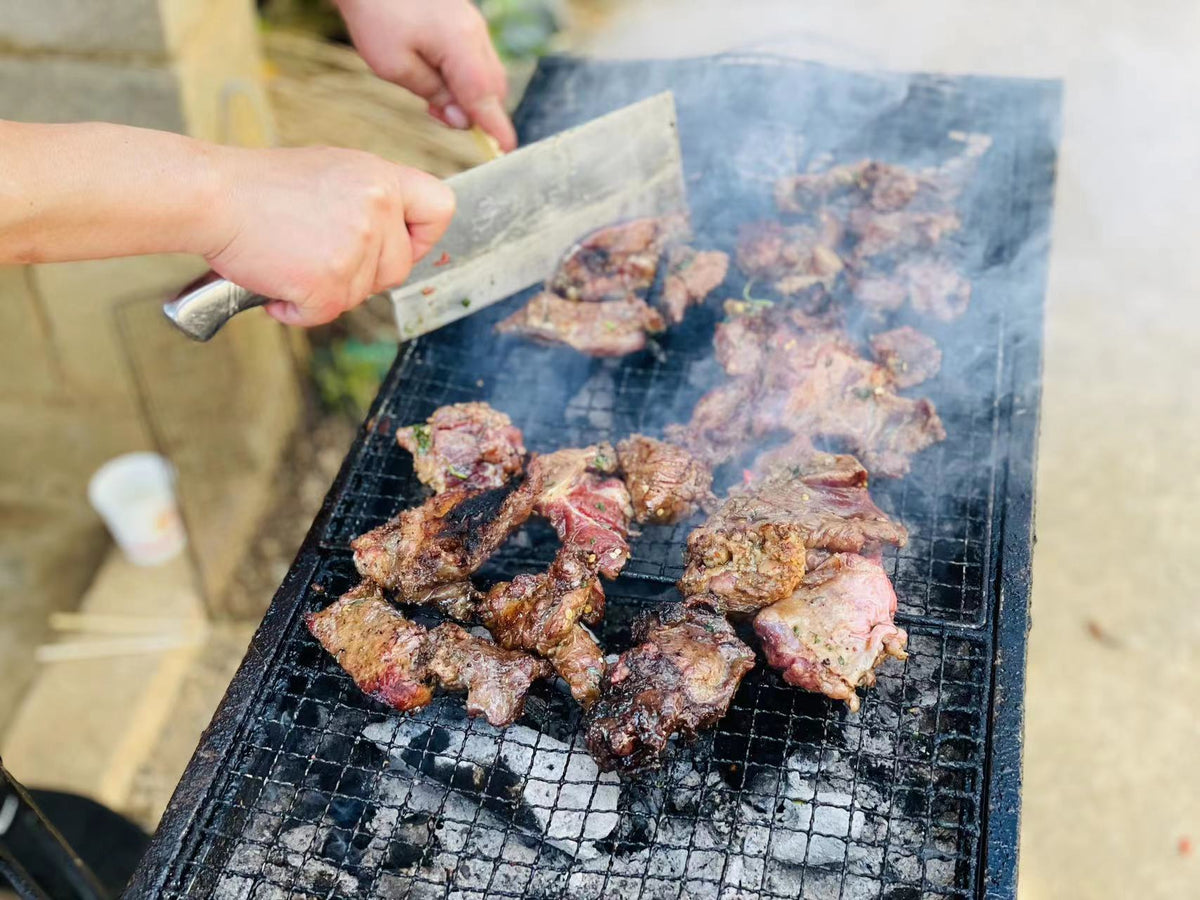Your Cart is Empty
Author: Logan Hayes
Earlier this year,
we sat down with Liyuan (she goes by "Nancy"), our friend and liaison to Ma Wei Shan for nearly 5 years.
Ma Wei Shan ("Horse Tail Mountain") is a model example of central Yunnan tea farms. Its hillsides are striped with xiao shu ("young tree") bushes 20-30 rows up and speckled with bird-nesting trees. The tallest tea plants grow in the area's iron and aluminum-rich red soils at over 1300 meters.

Nancy keeps us in touch with the goings-on at Ma Wei year-round; in January we had a video call about life on the farm in winter and over Lunar New Year.
Here's what she had to share:

So, what does Ma Wei Shan look like during the winter time?
Nancy:
Winter in the tea garden is all about rest. The tea trees are heavily pruned to one-third of a tea "crown" (down from one-half).
Editor's note: a tea "crown" refers to any one branch and its leaves.
During the winter, [the trees] take a break which is vital for sprouting in the spring. We also have animals on the farm (like chickens) that take time to rest during the winter months. Some farmers build or repair homes in the winter and spend extra time with their families.
[At the factory level], we conduct tea tastings as a team and develop new tea products for customers. When I have time, I like to enjoy the bright sunshine while simply strolling through the tea garden.
How long do tea plants need to rest before next spring?
How long does harvest last each year exactly?
Because the climate is subtropical in Yunnan province, we generally pluck tea leaves from Spring all the way through Autumn. Tea trees on this farm rest for just two months (December and January) in winter.

How do the plants react to the cold?
Are winter harvests ever made, and what teas are made from winter material?
The winter temperature is too cold for much tea growth. Many of the tea trees stop sprouting when it is below 15C° (59F°). Even if some of the tea bushes grow, they grow slowly and have a very small yield. In addition, labor and material costs of tea picking in the winter are higher, so winter is typically a break from harvest.

And how much compressed tea is prepared during this time?
In winter most of our workers only make compressed tea. Each day we produce about 20 tons of pressed tea—bings (cakes), bricks, and other forms. Over the new year, all production is halted completely.
Speaking of—what does Lunar New Year look like on the farm?
For us, Lunar New Year is about having a good rest. We celebrate with a whole roast pig feast dedicated to the coming harvest, and invite family members to join and “pig out." All of the dishes feature different parts of the pig!

Featured collection
Selections from our partners at Ma Wei Shan farm in Yunnan, China.




